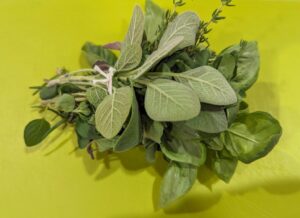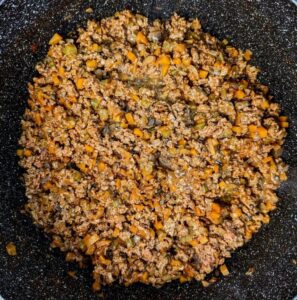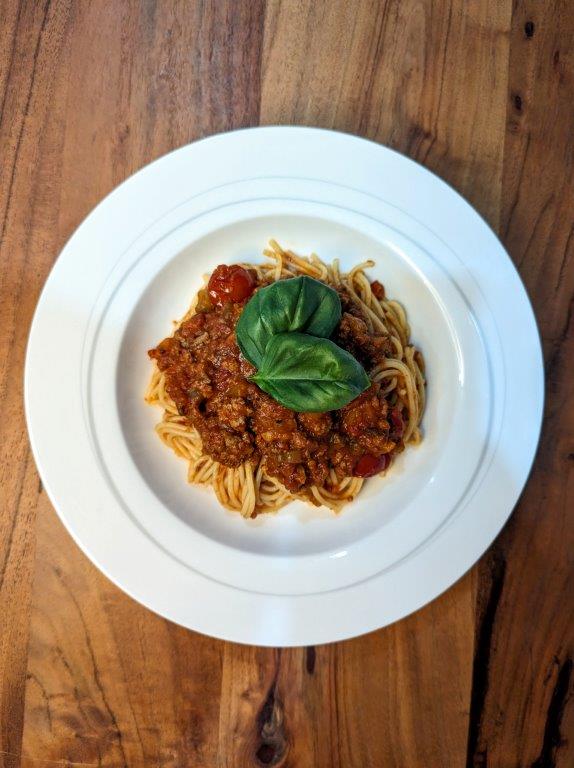Ingredients
3 tbsp olive oil
20 g butter
1 kg regular beef mince (not lean)
6 garlic cloves, crushed
1 onion, diced
3 carrots, diced
4 celery sticks, diced
150 g mushrooms, diced
120 g spinach, roughly chopped
1 beef stock cube
1 cup white wine
120 g tomato paste
700 ml passata
3 x 400g canned tomatoes
¼ cup dried mixed Italian herbs
½ tsp salt
1 tsp pepper
½ cup milk or cream (optional)
¼ tsp chilli powder (optional)
pasta, to serve
grated parmesan, to serve
Ingredients
3 tbsp olive oil
1.50 tbsp butter
2 lbs regular beef mince (not lean)
6 garlic cloves, crushed
1 onion, diced
3 carrots, diced
4 celery sticks, diced
5 oz mushrooms, diced
4 oz spinach, roughly chopped
1 beef stock cube
1 cup white wine
4 oz tomato paste
3 cups passata
3 x 14 oz canned tomatoes
¼ cup dried mixed Italian herbs
½ tsp salt
1 tsp pepper
½ cup milk or cream (optional)
¼ tsp chilli powder (optional)
pasta, to serve
grated parmesan, to serve













